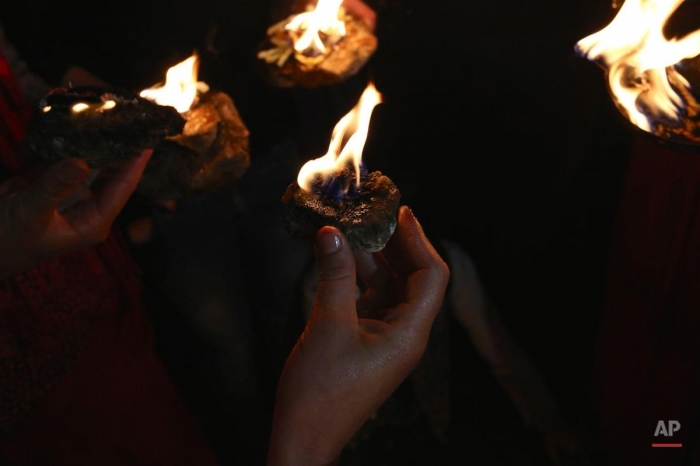The quest for Origins. Yezidism – its background observances and textual tradition

Philip G. Kreyenbroek
Part 5
Many students of Yezidism at the time would probably have disagreed with the general tone of this passage. However, its description of that faith as "a kind of Manichaeism" reflects two prominent aspects of Yezidi Studies in the mid- nineteenth century, namely a strong preoccupation with the question of the origins of Yezidism, and a somewhat limited knowledge of its practices and tenets. Those who had studied the works of Layard and Badger would have been aware that the Yezidis themselves claim that the "Yezid" from whom the name of their sect derives was the Umayyad caliph Yazid b. Mu'awiya (d, 683 CE), but that this information was regarded with skepticism by experts.14 It was known that the Yezidis worship one God, and that they venerate Sheykh Adi, the Peacock Angel (a figure associated in some way with Satan) and, under him, a number of lesser angels or divine beings. The Yezidis' preoccupation with purity and their veneration for the sun, fire and the other 'elements' had been remarked upon,1 as had the role of the Flood in their myths and the fact that they practise a form of baptism. Layard's assertion that they believe in the cosmogony of Genesis and the Second Coming of Christ was no doubt made in good faith, but was somewhat misleading. The main facts concerning the priestly hierarchy of Yezidism were known, although both Layard and Badger wrongly asserted that Pirs were superior to Sheykhs. Layard had pointed out that both Yezidis and "Sabians" (i.e. Mandaeans)20 abhor the colour blue. Concerning the religious texts of the community, Layard made the following remarks:
The chants and hymns—the only form of prayer, which as far as I could ascertain, they possess—are, as I have already observed, in Arabic. They have, I believe, a sacred volume, containing their traditions, their hymns, directions for the performance of their rites, and other matters connected with their religion. It is preserved either at Baazani or Baasheika, and is regarded with so much superstitious reverence that I failed in every endeavour to obtain a copy, or even to see it. It is considered unlawful to know how to read and write. There are only one or two persons amongst the Yezidis who can do either.,. Those who know how to read have been taught in order that they may preserve the sacred book, and may refer to it for the doctrines and ceremonies of the sect.
Both Badger and Layard23 published a translation of a Qasida attributed to Sheykh Adi. This text was described to Layard as "the sacred book of the Yezidis".24 Badger says:2֊'
I believe this poem to be the only fragment now extant in any way connected with their creed, and I very much doubt whether they ever had any scriptures. Their occasional pretensions to possess such must be regarded as another artifice to evade the hatred of the Mohammedans, who are taught in the Koran to consider those who are not the "people of the book", i.e. have no written revelations, as fit objects for every species of indignity and persecution. Should this, however, be a mistaken conclusion, it is an undisputable fact, that hardly one yazidi exists who could understand a well written Arabic treatise,,. So then, if they really have any books, it is clear that they can make no use of them.
(11) The Pearl became radiant with colours.
Before, there was neither Earth,
Nor Sky, nor a Throne.
Let someone tell me whom my King loved.
(12) My king is nicely-spoken.
Love (and the Cup) were seated together.
At that stage my King instituted measures and laws.
(13) My King established measures and laws in it,
He separated the Shari and the Truth from each other,
The Tradition had been hidden then it was revealed.
(14) The Tradition was hidden , then it was revealed,
My King sent the Truth into (the world).
He said , My dear , where was the Tradition; where had it established itself
(15) What commanding lord of mine
Was sent , descending from the sky ?
Through the Power , the Mystery of the Tradition hung suspended in the air.
(16) Through the Power the Tradition hung suspended;
It obtained authorization from its King,
He said , My dear, (your) intercession is an act of love
(17) What lord of mine of weighty command
Has established many cornerstones amongst them ?
He gave love and the direction of light as signs for them.
(18) The direction of light is a doorway.
Two jewels were created
One is the yey , and the other the eye
(19) One is the yey and is sight
My King caused the Pearl to become visible.
The King knows the positions of all men.
(20) The lamp came down from above , love came into ( the world) ,
My King seized it, it became an eye.
Tell me what he said to the Pearl. Water came from it.
Tags: #yazidisinfo #yezidi #yazidi #aboutyazidi
The quest for Origins. Yezidism – its background observances and textual tradition

Philip G. Kreyenbroek
Part 5
Many students of Yezidism at the time would probably have disagreed with the general tone of this passage. However, its description of that faith as "a kind of Manichaeism" reflects two prominent aspects of Yezidi Studies in the mid- nineteenth century, namely a strong preoccupation with the question of the origins of Yezidism, and a somewhat limited knowledge of its practices and tenets. Those who had studied the works of Layard and Badger would have been aware that the Yezidis themselves claim that the "Yezid" from whom the name of their sect derives was the Umayyad caliph Yazid b. Mu'awiya (d, 683 CE), but that this information was regarded with skepticism by experts.14 It was known that the Yezidis worship one God, and that they venerate Sheykh Adi, the Peacock Angel (a figure associated in some way with Satan) and, under him, a number of lesser angels or divine beings. The Yezidis' preoccupation with purity and their veneration for the sun, fire and the other 'elements' had been remarked upon,1 as had the role of the Flood in their myths and the fact that they practise a form of baptism. Layard's assertion that they believe in the cosmogony of Genesis and the Second Coming of Christ was no doubt made in good faith, but was somewhat misleading. The main facts concerning the priestly hierarchy of Yezidism were known, although both Layard and Badger wrongly asserted that Pirs were superior to Sheykhs. Layard had pointed out that both Yezidis and "Sabians" (i.e. Mandaeans)20 abhor the colour blue. Concerning the religious texts of the community, Layard made the following remarks:
The chants and hymns—the only form of prayer, which as far as I could ascertain, they possess—are, as I have already observed, in Arabic. They have, I believe, a sacred volume, containing their traditions, their hymns, directions for the performance of their rites, and other matters connected with their religion. It is preserved either at Baazani or Baasheika, and is regarded with so much superstitious reverence that I failed in every endeavour to obtain a copy, or even to see it. It is considered unlawful to know how to read and write. There are only one or two persons amongst the Yezidis who can do either.,. Those who know how to read have been taught in order that they may preserve the sacred book, and may refer to it for the doctrines and ceremonies of the sect.
Both Badger and Layard23 published a translation of a Qasida attributed to Sheykh Adi. This text was described to Layard as "the sacred book of the Yezidis".24 Badger says:2֊'
I believe this poem to be the only fragment now extant in any way connected with their creed, and I very much doubt whether they ever had any scriptures. Their occasional pretensions to possess such must be regarded as another artifice to evade the hatred of the Mohammedans, who are taught in the Koran to consider those who are not the "people of the book", i.e. have no written revelations, as fit objects for every species of indignity and persecution. Should this, however, be a mistaken conclusion, it is an undisputable fact, that hardly one yazidi exists who could understand a well written Arabic treatise,,. So then, if they really have any books, it is clear that they can make no use of them.
(11) The Pearl became radiant with colours.
Before, there was neither Earth,
Nor Sky, nor a Throne.
Let someone tell me whom my King loved.
(12) My king is nicely-spoken.
Love (and the Cup) were seated together.
At that stage my King instituted measures and laws.
(13) My King established measures and laws in it,
He separated the Shari and the Truth from each other,
The Tradition had been hidden then it was revealed.
(14) The Tradition was hidden , then it was revealed,
My King sent the Truth into (the world).
He said , My dear , where was the Tradition; where had it established itself
(15) What commanding lord of mine
Was sent , descending from the sky ?
Through the Power , the Mystery of the Tradition hung suspended in the air.
(16) Through the Power the Tradition hung suspended;
It obtained authorization from its King,
He said , My dear, (your) intercession is an act of love
(17) What lord of mine of weighty command
Has established many cornerstones amongst them ?
He gave love and the direction of light as signs for them.
(18) The direction of light is a doorway.
Two jewels were created
One is the yey , and the other the eye
(19) One is the yey and is sight
My King caused the Pearl to become visible.
The King knows the positions of all men.
(20) The lamp came down from above , love came into ( the world) ,
My King seized it, it became an eye.
Tell me what he said to the Pearl. Water came from it.
Tags: #yazidisinfo #yezidi #yazidi #aboutyazidi


























